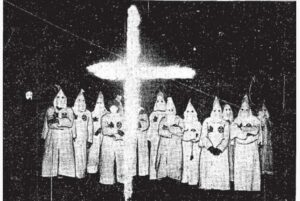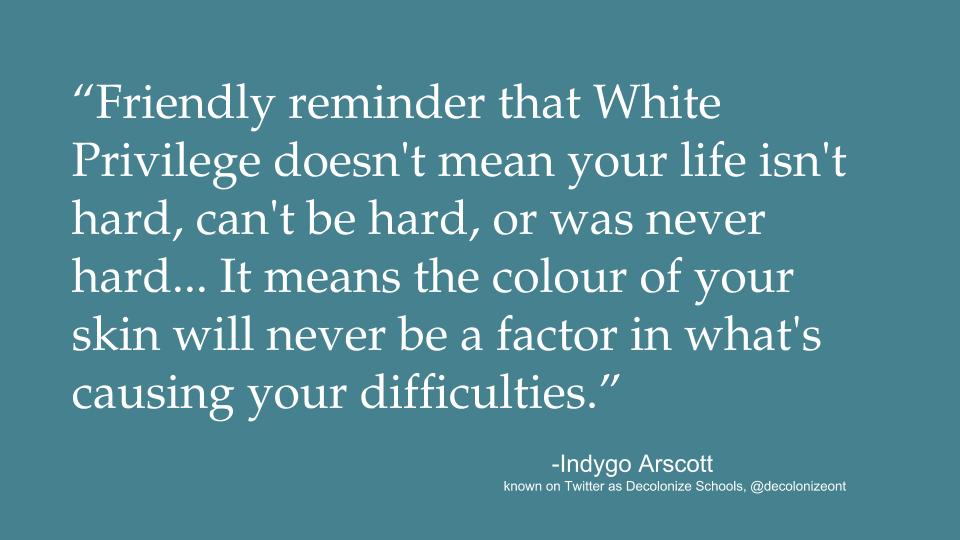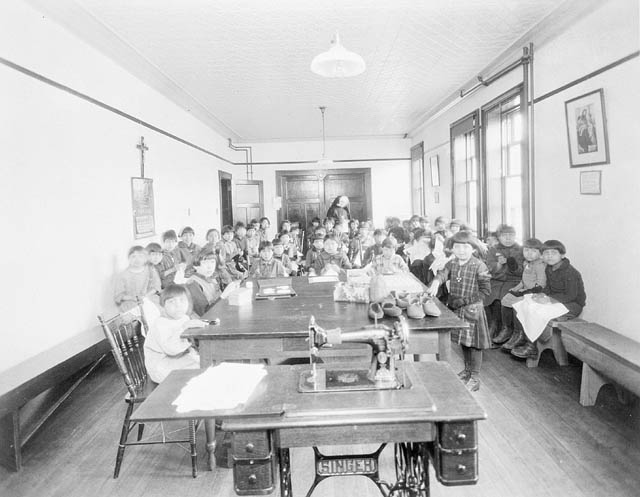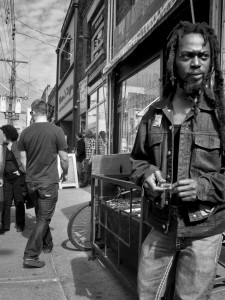Chapter 11. Race and Ethnicity
11.2. Stereotypes, Prejudice, and Discrimination
The terms stereotype, prejudice, discrimination, and racism are often used interchangeably in everyday conversation. But when discussing these terms from a sociological perspective, it is important to define them: Stereotypes are oversimplified ideas about groups of people; prejudice refers to negative thoughts and feelings about those groups; discrimination refers to negative actions toward them; racism is a type of prejudice that involves set beliefs about a specific racial group.
Stereotypes
Stereotypes are oversimplified ideas about groups of people in the sense that they are based on rigid generalizations which do not bear up under critical scrutiny. Stereotypes can be based on race, ethnicity, age, gender, sexual orientation — almost any characteristic. They may be positive (usually about one’s own group, such as when women suggest they are less likely than men to complain about physical pain) but are often negative (usually toward other groups, such as when members of a dominant racial group suggest that a subordinate racial group is stupid or lazy). In either case, the stereotype is a generalization that does not take individual differences into account.
For example, when a newspaper prints the race of individuals accused of a crime, it may enhance stereotypes of a certain minority. It is difficult to think of Somali Canadians, for example, without recalling the news reports of gang-related deaths in Toronto’s social housing projects or the northern Alberta drug trade (Wingrove & Mackrael, 2012).
Where do stereotypes come from? New stereotypes are rarely created; rather, they are recycled from subordinate groups that have assimilated into society and are reused to describe newly subordinate groups. For example, many stereotypes currently used to characterize Black people were used earlier in Canadian history to characterize Irish and Eastern European immigrants. Current stereotypes about Black youth are also circulated and reinforced through media imagery. Manzo and Bailey’s (2008) research on young Black and Mulatto offenders in Alberta described two types of Black stereotypes, the offenders recognized as imposed on them: the gangsta image, which characterized them as dangerous, defiant and criminal, and the entertainer image, which characterized them as athletic or musically and theatrically talented. As one respondent described it, “because I’m black, everyone looks at you like…a gangsta, playa, baller, right. I don’t look at myself like that, but everyone else calls me that, like ‘What’s up, thug?’…. They look at you and if you’re not that then you are not popular, you are not really black” (Manzo and Bailey, 2008).
Prejudice and Racism

Prejudice refers to negative beliefs, thoughts, feelings, and attitudes that someone holds about a group. It is a personal disposition or attitude although often shared collectively. If, despite evidence to the contrary, a person rigidly maintains negative beliefs and opinions about that groups, then that person is prejudiced. As such, prejudice is not based on experience; instead, it is a prejudgment originating outside of actual experience. Racism is a type of prejudice used to justify the belief that one racial category is somehow superior or inferior to others. White supremacist groups are examples of racist organizations; their members’ belief in White supremacy — the doctrine that non-White groups are inferior and that racial discrimination, segregation, and domination is justified — was the basis of African American slavery and has encouraged hate crimes and hate speech for over a century in North America.
Discrimination
While prejudice refers to biased thinking or attitudes, discrimination consists of biased actions against a group of people. It is the unequal treatment of others based on their perceived or actual membership in a group. Discrimination can be based on age, religion, health, and other indicators, but when it is based on stereotypes about race or ethnicity, it can be defined as racism or ethnocentrism, respectfully.
Discrimination based on race or ethnicity can take many forms, from unfair housing practices to biased hiring systems. An example of racial discrimination is racial steering, in which real estate agents direct prospective homeowners toward or away from certain neighbourhoods based on their race. Overt discrimination has long been part of Canadian history. Discrimination against Jews was typical until the 1950s. McGill University imposed quotas on the admission of Jewish students in 1920, a practice which continued in its medical faculty until the 1960s. As evident in the Nova Scotia case of Viola Desmond (see Chapter 7. Groups and Organizations), Canada also had its own version of American Jim Crow laws, which designated “Whites only” areas in cinemas, public transportation, workplaces, etc. Both Ontario and Nova Scotia had racially segregated schools. It is interesting to note that while Viola Desmond was prosecuted for sitting in a Whites only section of the cinema in Glasgow, Nova Scotia, she was in fact of mixed-race descent as her mother was White (Backhouse, 1994). These practices are unacceptable in Canada today.
Race-based discrimination and anti-discrimination laws strive to address this set of social problems. However, discrimination cannot be erased from our culture just by enacting laws to abolish it. Even if a magic pill managed to eradicate racism from each individual’s psyche, societal structures would maintain it. Sociologist Émile Durkheim (1895) would call racism “a social fact,” meaning it does not require the intentional action of individuals to continue. The reasons for this are complex and relate to the way educational, criminal justice, economic, and political systems are historically structured by racial distinctions. Systemic racism refers to the idea that there are numerous overlapping structures of discrimination embedded within and between organizations and institutions, which mutually reinforce unequal race-based distinctions and outcomes regardless of the personal attitudes of individual actors. As opposed to institutional racism within specific institutions (see below), systemic racism emphasizes how racial discrimination within specific organizations and institutions, often unacknowledged, is reinforced by racial discrimination within other organizations and institutions (i.e., it is systemic across a society).
Prejudice and discrimination can overlap and intersect in many ways. To illustrate, here are four examples of how prejudice and discrimination interact. Unprejudiced non-discriminators are open-minded, tolerant, and accepting individuals. Unprejudiced discriminators might be those who, unthinkingly, practice racism in their workplace by not considering racialized minorities for certain positions that are traditionally held by Whites. Prejudiced non-discriminators are those who hold racist beliefs but do not act on them, such as a racist store owner who serves minority customers. Prejudiced discriminators include those who actively make disparaging remarks about others or perpetuate hate crimes.
White Privilege

Discrimination can also involve the promotion of a group’s status, such as occurs with White privilege. While most White people are willing to admit that people of colour live with a set of disadvantages due to the colour of their skin, very few White people are willing to acknowledge the benefits they receive simply by being White. White privilege is defined by Derald Wing Sue (2015) as “the unearned advantages and benefits that accrue to White folks by virtue of a system normed on the experiences, values, and perceptions of their group.” In other words, the norms that White people have defined for themselves and others make their privilege within a system of inequality difficult for them to recognize as such. In everything from relationships to authorities, to job opportunities, to simply walking in public areas, it seems that their advantages and benefits in society are natural, or even earned. They do not see or experience the barriers or disadvantages that others confront as a matter of course.
However, as Sue continues:
White privilege (a) automatically confers dominance to one group, while subordinating groups of colour in a descending relational hierarchy, (b) owes its existence to White supremacy, (c) is premised on the mistaken notion of individual meritocracy and deservingness (hard work, family values, etc.) rather than favouritism, (d) is deeply embedded in the structural, systemic, and cultural workings of U.S. [and Canadian] society, and (e) operates within an invisible veil of unspoken and protected secrecy (Sue, 2015).
Like the heated reactions to the breaching experiments conducted by Garfinkel and his students (see Chapter 3. Culture), getting individuals to think about these sorts of privilege can be challenging because they are supported by an unspoken system of norms that even well meaning people do not want to think about. Failure to recognize this “normality” as race-based is an example of a dominant group’s often unconscious racism.
Institutional Racism
Discrimination also manifests in different ways. The illustrations above are examples of individual discrimination, but other types exist. Institutional discrimination or institutional racism is when a societal institution has developed with an embedded disenfranchisement of a group, such as Canadian immigration policies that imposed “head taxes” on Chinese immigrants in 1886 and 1904. Institutional racism refers to the way in which racial distinctions are used to organize the policy and practice of state, judicial, economic, and educational institutions. As a result these distinctions systematically reproduce inequalities along racial lines. They define what people can and cannot do based on racial characteristics. It is not necessarily the intention of these institutions to reproduce inequality, nor of the individuals who work in the institutions. Rather, inequality is the outcome of patterns of differential treatment based on racial or ethnic categorizations of people.
Clear examples of institutional racism in Canada can be seen in the Indian Act and immigration policy, as already noted. The residential school system for Indigenous children is another example that provided different types of education for Indigenous and non-Indigenous children. Similarly, as described below, the effects of institutional racism can be observed in the structures that reproduce income inequality for visible minorities and Indigenous Canadians. This can be seen in the racialized characteristics of the economy. Although labour participation rates are similar for racialized and non-racialized individuals, unemployment for racialized men, (and even more so or racialized women), is much higher than for their non-racialized counterparts. Moreover, income levels for racialized Canadians are much lower than for non-racialized Canadians (Block and Galabuzi, 2011). These substantial, statistically significant differences between racialized and non-racialized Canadians indicate that economic institutions in Canada are systematically structured on the basis of racialized differences in the workforce rather than on the basis of individual qualities of workers or individual acts of prejudice of employers.
Making Connections: Sociology in the Real World
The Residential School System

In 2021, the Tk’emlúps te Secwépemc First Nation near Kamloops, BC, announced the discovery of the remains of 215 children in unmarked graves on the grounds of the former Kamloops Indian Residential School. This, and other ground penetrating radar surveys at residential schools across Canada, have confirmed what residential school survivors have said for years—that many Indigenous children who were removed from their families and forced to attend the schools never returned. Survivors witnessed abuse and the deaths of children. They described how these children just “disappeared.” The National Centre for Truth and Reconciliation has documented 4,118 children who died at residential schools but the actual number is expected to be greater than that (Deer, 2021).
The residential school system was set up in the 19th century to educate and assimilate Indigenous children into European culture. From 1883 until 1996, over 150,000 Indigenous, Inuit, and Métis children were forcibly separated from their parents and their cultural traditions and sent to missionary-run residential schools. In the schools, they received substandard education and many were subject to neglect, disease, and abuse. Many children did not see their parents again, and thousands of children died at the schools. When they did return home they found it difficult to fit in. They had not learned the skills needed for life on reserves and had also been taught to be ashamed of their cultural heritage. Because the education at the residential schools was inferior they also had difficulty fitting into non-Indigenous society.
The residential school system was part of a system of institutional racism because it was established on the basis of a distinction between the educational needs of Indigenous and non-Indigenous people. In introducing the policy to the House of Commons in 1883, Public Works Minister Hector Langevin argued, “In order to educate the children properly we must separate them from their families. Some people may say that this is hard but if we want to civilize them we must do that” (as cited in Truth and Reconciliation Commission, 2012, p. 5). The sad legacy of this “civilizing” mission has been several generations of severely disrupted Indigenous families and communities; the loss of Indigenous languages and cultural heritage; and the neglect, abuse, and traumatization of thousands of Indigenous children and parents. As the Truth and Reconciliation Commission concluded, the residential school system constituted a systematic assault on Indigenous families, children, and cultures in Canada. Some have likened the policy and its aftermath to a cultural genocide (Truth and Reconciliation Commission of Canada, 2012).
While the last of the residential schools closed in 1996, the problem of Indigenous education remains grave, with 40% of all Indigenous people aged 20 to 24 having no high school diploma (61% of on-reserve Indigenous people), compared to 13% of non-Indigenous (Congress of Aboriginal Peoples, 2010). The impact of generations of children being removed from their homes to be educated in an underfunded and frequently abusive residential school system has been “joblessness, poverty, family violence, drug and alcohol abuse, family breakdown, sexual abuse, prostitution, homelessness, high rates of imprisonment, and early death” (Truth and Reconciliation Commission, 2012). Even with the public apology to residential school survivors and the inauguration of the Truth and Reconciliation Commission in 2008, the federal government, and the interests it represents, continue to refuse basic Indigenous claims to title, self-determination, and control over their lands and resources.
Income Inequality among Racialized Canadians

The effects of institutional racism are visible in the structures that reproduce income inequality for visible minorities or racialized Canadians. As discussed in Chapter 9. Social Inequality, race and ethnicity are the basis of ascribed status, a status one receives by virtue of being born into a category or group, as opposed to achieved status, a status one receives through individual effort or merits. In a society like Canada, which is based on formal equality of opportunity or meritocracy, race should not be a barrier to equality and social mobility. The evidence shows otherwise however.
In 2015, the median income of Registered Indians living on reserve was less than half that of the non-Indigenous population ($20,357/yr. vs. $42,930/yr.), whereas Registered Indians living off reserve, Non-Status Indians, and Inuit had median incomes between 75% and 80% of the non-Indigenous population median income (Department of Indigenous Services, 2020). In 2015, the rates of poverty (using the after tax Low-Income Measure) for Registered Indians living on reserve were at 47.7%, Registered Indians living off reserve were 30.3%, Non-Status Indians were 25.2%, and Inuit were 22.3%, whereas the rates for non-Indigenous, non-racialized individuals were 13.8%. Rates of poverty for Indigenous people declined between 2005 and 2015, but in some areas of the country like Saskatchewan and Manitoba poverty rates stood at between 60% and 40% for on reserve, off reserve and non-status Indigenous people.
Institutional racism is also deeply problematic for other visible minorities. In 2016, racialized individuals made up 22% of the Canadian population, up from 16% in 2006, and less than 5% in the 1980s (Block, Galabuzi, & Tranjan, 2019). By 2031, this figure is expected to be 32% (Block & Galabuzi, 2011). In 2016, of these 7.7 million individuals:
-
25.1% were South Asian
-
20.5% were Chinese
-
15.6% were Black
-
10.2% were Filipino
-
6.8% were Arab
-
5.8% were Latin American
-
4.1% were South East Asian (Block, Galabuzi, & Tranjan, 2019)
While labour participation rates in the economy (i.e., employed or actively looking for work) were higher for racialized than non-racialized individuals, racialized individuals were 20% more likely to be unemployed than non-racialized individuals in 2016 (Block, Galabuzi, & Tranjan, 2019). The raci0alized population had an unemployment rate of 9.2% compared to the non-racialized rate of 7.3%. This gap was highest between racialized women whose unemployment rate was 9.6% compared to non-racialized women at 6.4%, but racialized men were also unemployed at a higher rate than non-racialized men (8.8% compared to 8.2% respectively). Moreover, racialized men earned only 78% of the income that non-racialized men earn, and racialized women only 59%, because they tend to find work in insecure, temporary, and low paying jobs like call centres, security services, and janitorial services. Those identifying as Chinese men and women earned 87% and 66% respectively of the income of non-racialized Canadian men; South Asians 83% and 57%; and Filipinos, Latin Americans, and Arabs approximately 75% and 52% (60% for Filipino women). Black men and women earned 66% and 56% of the income of non-racialized men. These figures were more or less unchanged between 2006 and 2016.
Some people suggest that these inequalities are less to do with race as an ascribed status and more to do with immigration status. It stands to reason that the percentage of racialized individuals is highest among recent immigrants and therefore it will take a generation to catch up with native born Canadians. However, according to Block, Galabuzi, & Tranjan (2019), these inequalities in income are not simply the effect of the time it takes immigrants to integrate into the society and economy. Table 11.2 (below) shows how the income inequality between racialized and non-racialized individuals remains substantial even into the third generation of immigrants.
| Generation | Racialized Men | Racialized Women | Non-Racialized Men | Non-Racialized Women | Earnings Gap (%) with Non-racialized men vs Men | Earnings gap (%) with Non-racialized men vs. Women |
|---|---|---|---|---|---|---|
| 1st Generation | $49,786 | $36,127 | $69,838 | $45,803 | 71% | 52% |
| 2nd Generation | $60,039 | $48,713 | $75,582 | $50,590 | 79% | 64% |
| 3rd or more Generation | $60,399 | $42,904 | $66,208 | $44,698 | 91% | 65% |
Source: Average Employment Income for Racialized and Non-racialized Canadians by generation in 2016 [modified], from Block and Galabuzi and Tranjan (2019) [Original data source: 2016 Census of Population, Statistics Canada, Catalogue Number 98-400-X2016210 and Block, et al. (2019) calculations. Open Government License
The question concerning racial and ethnic inequality therefore remains a sociological problem. How can sociologists draw on the different paradigm of sociological explanation to provide insight into the sources and nature of racism, prejudice, stereotypes, and discrimination? Is more than one theory needed? Which of the sociological frameworks makes the most sense, and why?
Media Attributions
- Figure 11.8 A Ku Klux Klan cross-burning ceremony in London, Ontario, Canada in late 1925 by the Toronto Star is in the public domain.
- Figure 11.9 Quotation: “Friendly reminder that White Privilege doesn’t mean your life isn’t hard…” by Ken Whytock, via Flickr, is used under a CC BY-NC 2.0 licence.
- Figure 11.10 Class of Mi’kmaq (Micmac) girls taken in the Shubenacadie Residential School, Shubenacadie, Nova Scotia, 1929 by Library Archives, via Flickr, is used under CC BY 2.0 licence.
- Figure 11.11 Marijuana Shop by Eric Parker, via Flickr, is used under CC BY-NC 2.0 licence.

